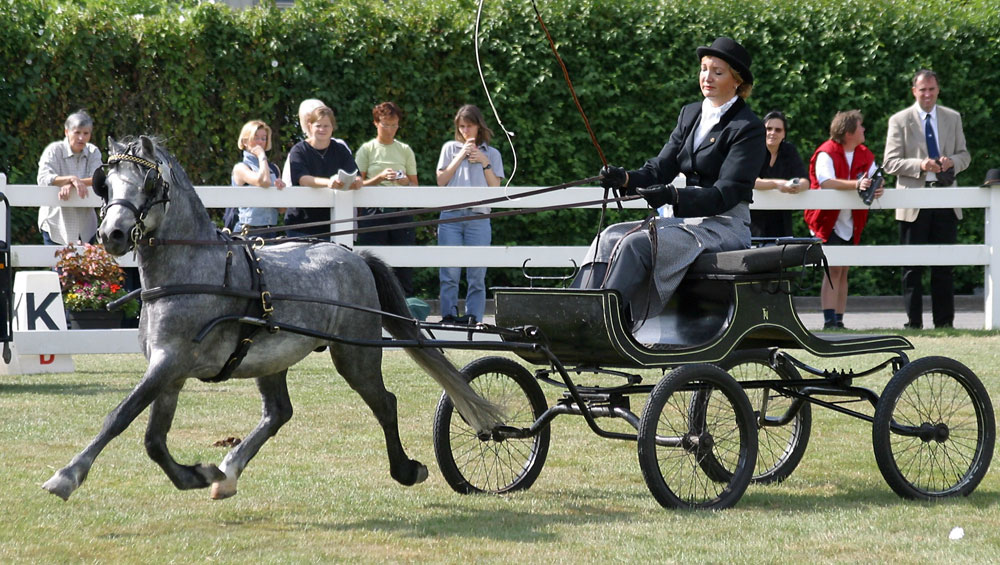Welsh Pony and Cob
Welsh Pony and Cob History
The wild wind-swept hills and valleys in Wales developed the characteristics of the Welsh Pony and Cob. Through the years, they lent their use to hill farmers and shepherds, landowners and deliverymen. In 1901, the Welsh Pony and Cob Society was established in Wales. Since the original wild pony had evolved into different looking animals, to establish a standard for each type the studbook was divided into sections A, B, C and D.


Welsh Pony and Cob Characteristics
The Welsh Mountain Pony, section A is the smallest at 12 hands high and the only one still living semi-feral in Wales. The Welsh Pony, section B, is a fancy child’s show pony at 13.2 hands high, found in hunter, pony classes and driving. The Welsh Pony of Cob Type, section C is 13.2 hands high and was traditionally used in the slate mines and farms. Today, it is ridden in hunter/jumpers, under saddle classes and harness. The stocky Welsh Cob, section D is 13.2 hands high and up and was once used on farms. It’s now found in the hunting field, under saddle and in competitive carriage driving. The legs are lightly feathered.
Welsh ponies and cobs come in all colors, including roan and palomino but not pinto.
For more information:
- The Welsh Pony and Cob Society (Wales), www.wpcs.uk.com;
- The Welsh Pony and Cob Society of America, www.welshpony.org
Further Reading:
Recent Posts
All Three Equestrian Sports Receive Final Confirmation for the LA 2028 Olympic Games
After a nail-biting two years of speculation about the inclusion of equestrian sports in the next Olympic Games, it was…
ASPCA Right Horse Adoptable Horse of the Week: Xanthus
Welcome to Horse Illustrated’s weekly installment of the Right Horse Adoptable Horse of the Week, offered in partnership with the…
Be Your Horse’s Joint Health Champion
Equine arthritis can affect horses of all disciplines and ages, and early intervention is crucial for maintaining comfort and performance.…
Tamie Smith: Taking It To The Next Level
Mother, grandmother, and winning 5* eventing rider—these three titles don’t typically go together. However, Tamie Smith, 49, is all of…
Organize & Customize Your Horse Trailer Storage
Organize and customizer your new horse trailer by adding a few simple storage items. I’ve been on the search for…
Breed Portrait: Gypsy Vanner
Learn about the Gypsy Vanner, a versatile and gentle small draft horse breed for equestrians of all types. After World…